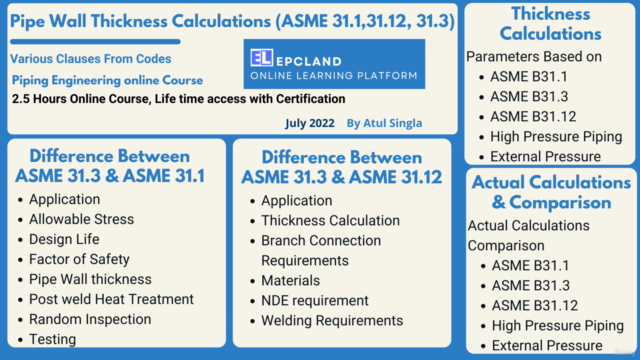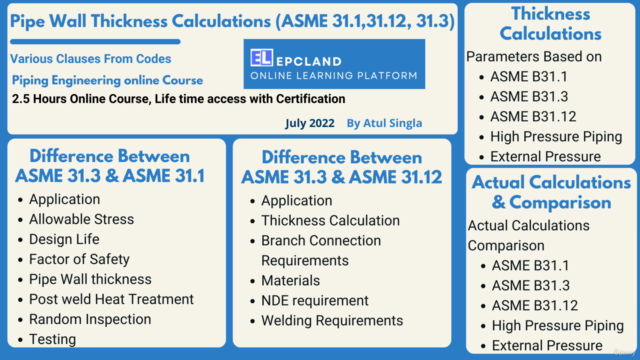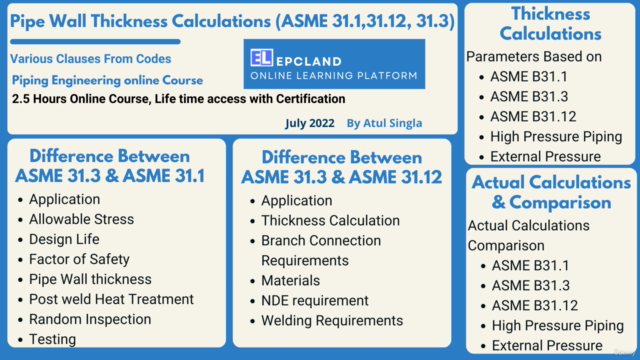Pipe Wall Thickness: Various Codes ASME B 31.1, 31.12, 31.3

Why take this course?
🛠️ Master Piping Engineering with ASME Codes: Unlock the Secrets of Pipe Wall Thickness Calculations for High Pressure Pipelines
🚀 Course Overview:
Welcome to the comprehensive online course, "Pipe Wall Thickness: Various Codes ASME B31.1, 31.12, 31.3," designed for engineering professionals who deal with high-pressure piping systems in various industries. This course will take you through the nuances of pipe wall thickness calculations, focusing on the differences between ASME B31.1, ASME B31.3, and ASME B31.12 codes, and their applications in design and maintenance. 🧐
What You'll Learn:
-
Difference Between ASME 31.3 & ASME 31.1 🔧
- Application, Allowable Stress, Design Life, Factor of Safety, Pipe Wall thickness, Post weld Heat Treatment, Random Inspection, and Testing.
-
Difference Between ASME 31.3 & ASME 31.12 🌡️
- Application, Thickness Calculation, Branch Connection Requirements, Materials, NDE requirement, and Welding Requirements.
-
Thickness Calculations Based on Various Codes 📈
- Guidelines for ASME B31.1, ASME B31.3, ASME B31.12, High Pressure Piping, and External Pressure scenarios.
-
Actual Calculations & Comparison 📊
- Step-by-step examples using ASME codes to calculate the minimum required thickness.
Key Topics Covered:
- Understanding pipe sizing (ID vs. OD)
- Percent thickness calculation methodology
- Standard thickness (STD) and its implications in different schedules of pipes (e.g., Sch 40, Sch 80)
- The significance of ASME B36.10M and ASME B36.19M standards for piping systems
- Practical applications of ASME codes in high-pressure and high-temperature environments
Who Should Take This Course?
This course is ideal for:
- Engineers working on high-pressure piping systems
- Designers and draftsmen involved in piping system design
- Technicians and specialists dealing with pipe maintenance and inspection
- Students pursuing degrees in mechanical, chemical, or civil engineering with a focus on piping systems
Why Enroll?
By completing this course, you will:
- Gain a deep understanding of the practical aspects of pipe wall thickness calculations.
- Learn to apply ASME codes and standards to ensure safety and efficiency in pipeline operations.
- Stay compliant with industry regulations and standards.
- Enhance your career prospects by adding valuable skills to your resume.
Elevate Your Expertise:
Dive into the intricacies of piping system design and maintenance with this specialized course. Equip yourself with the knowledge to apply ASME codes effectively and ensure the safety and integrity of high-pressure piping systems. 🏭🛠️
Join Now and Transform Your Understanding of Piping Systems!
Course Gallery




Loading charts...